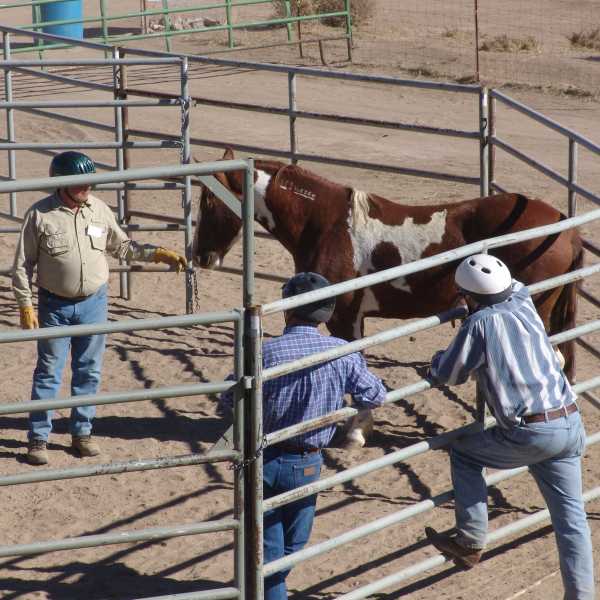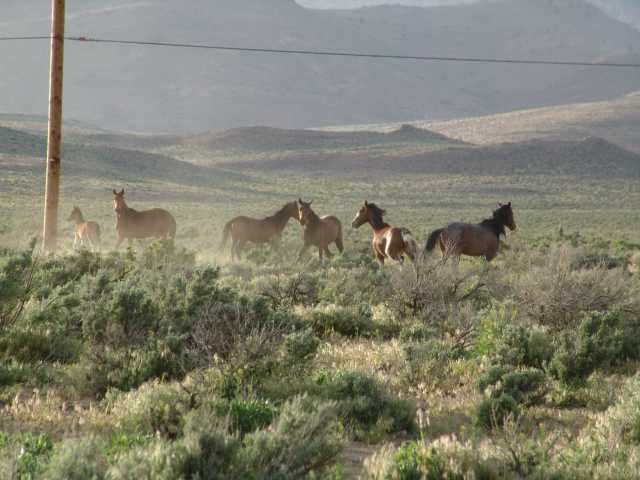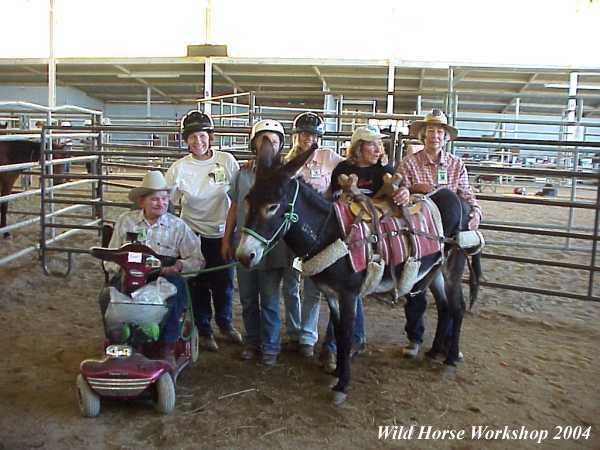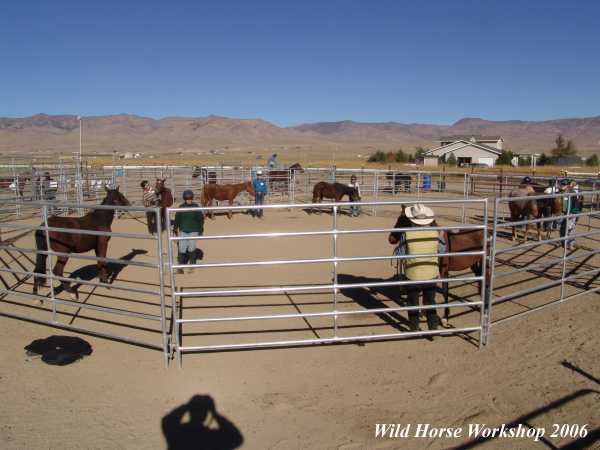Taming and Training
(If you have found this page via a link |

|
Safe, sane and reliable approaches to taming and training a wild horse
| HOW A HORSE OPERATES |
|
It is critical to remember that a horse is a prey animal. Any successful species that has spent thousands of years being dinner for large predators will have developed some unique characteristics. Horse behavior is strongly driven by emotion. Horses are instinctively afraid of anything that they do not recognize as being safe. Horses primarily communicate non-verbally as they don't want to inadvertently attract the attention of hungry predators. Clear social order is critical to the success of the species. Horses have eyes set on the sides of their heads (monocular vision) giving them the ability to see nearly all around them, however in trade off for that advantage they lose depth perception.
We humans are predators. We look, smell and for the most part behave like predators. Any smart wild horse will instinctively avoid us until we have proved that we are not a mortal threat. Most horses first have to accept individual humans as non-threatening before they accept humans in general as a species as non-threatening. Horses have highly developed social behaviors. If we understand those behaviors we can motivate the horse to bond with us socially, even though we are predators. Horses instinctively look for leadership. When humans make a social connection (bond) with a horse, the human can take on the role of leader. Even the most dominant horse can be comfortable "following" a human if the human presents him/herself to the horse as a recognizable leader. Following typically requires far less effort than leading. If you were to study horses in the wild, you would see that except for applying energy in response to emotional stimulation, horses are pretty energy efficient. They may have to travel miles from grazing areas to water and back each day, but mature horses seldom expend more energy than they have to. Getting back to non-verbal communication, horses communicate by means of physical interaction, often referred to as "games." The Parelli organization broke these games down into seven categories that out of all the various presentations on the subject most closely resemble what we actually see going on in wild horse bands. (We summarize the seven games in Training by the Numbers however the most complete source for this information can be obtained from Parelli Natural Horsemanship.) A dominant mare initiates the "driving game" to reinforce social discipline
|
| THE FOUNDATION FOR THIS PRESENTATION |
The Wild Horse Mentoring Project was first conceived by the late Barbara Eustis-Cross in the early 1990s. We knew a fellow named Pat Parelli and found that his philosophy and approaches worked extremely well with wild horses. In 1998 the mentoring project expanded into formal workshops involving truckloads of wild horses. The principal contributors to the development of our curriculum were the Parelli organization, Frank Bell, the late John Sharp (who while in is 90s was still gentling wild horses and burros from an electric wheelchair,) and Robert Denlinger.
John Sharp and his team with Mariah, a burro that was stark wild 3 days earlier
|



